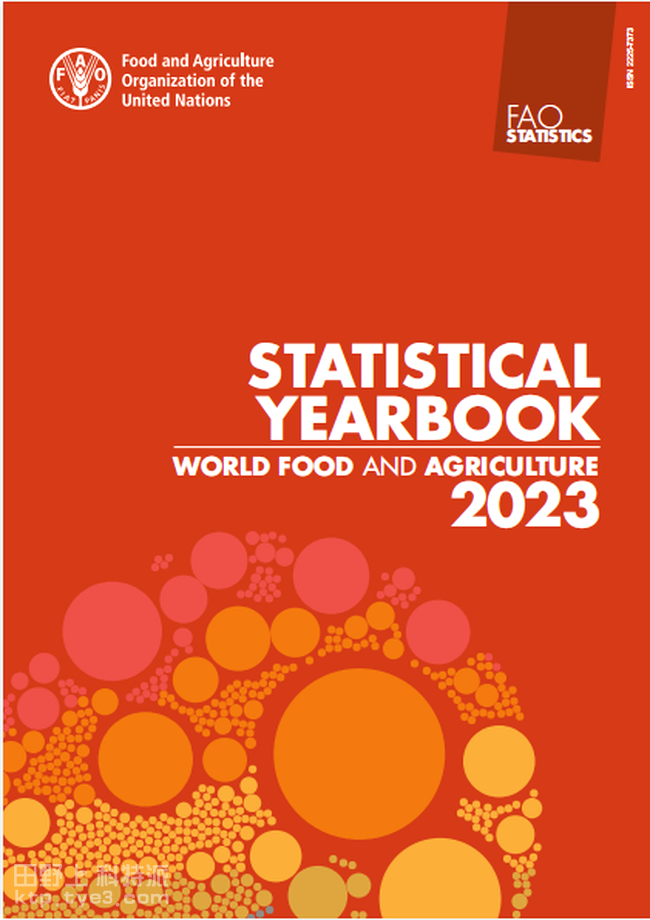
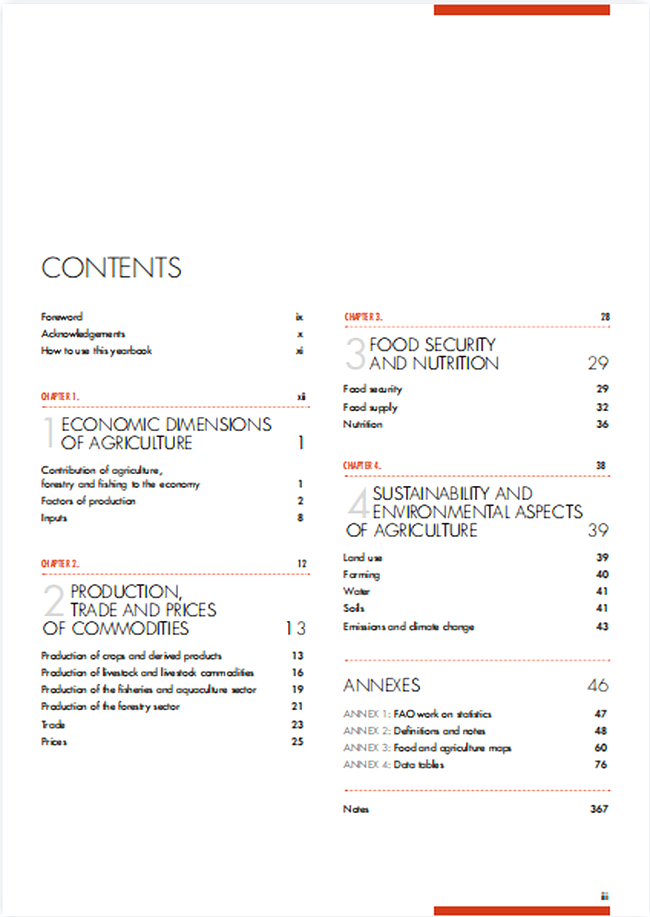

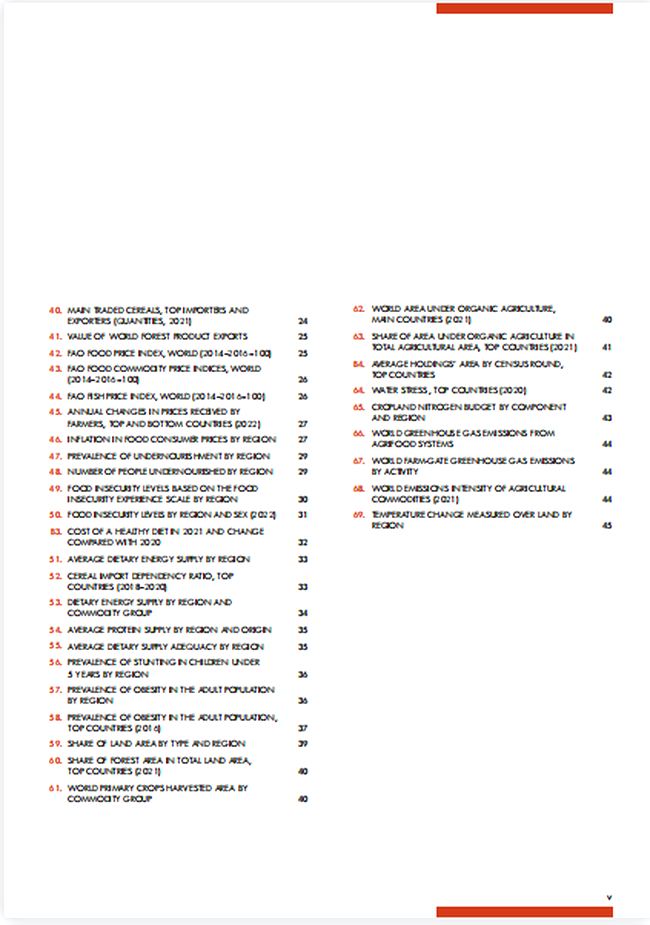
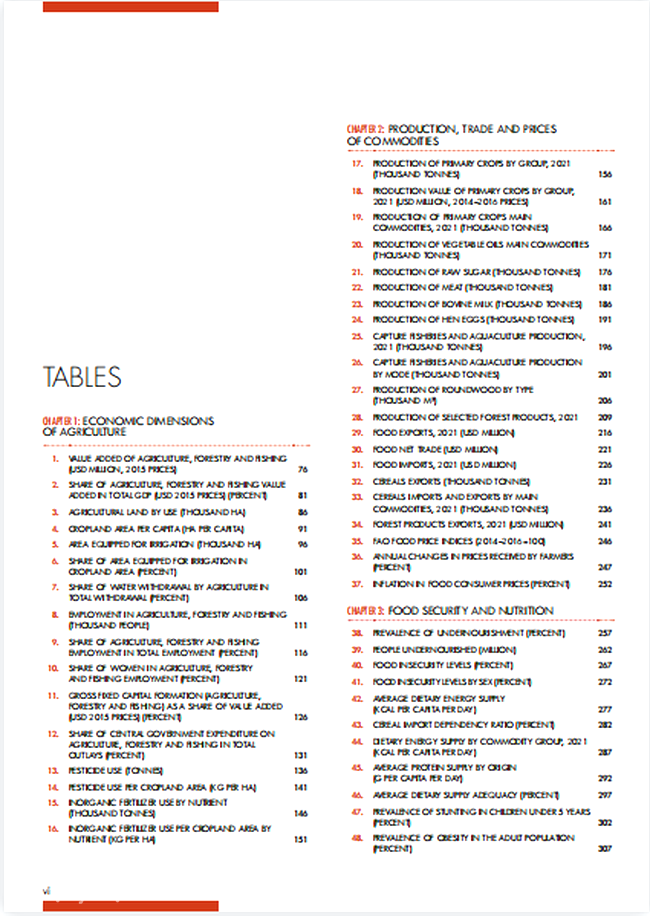
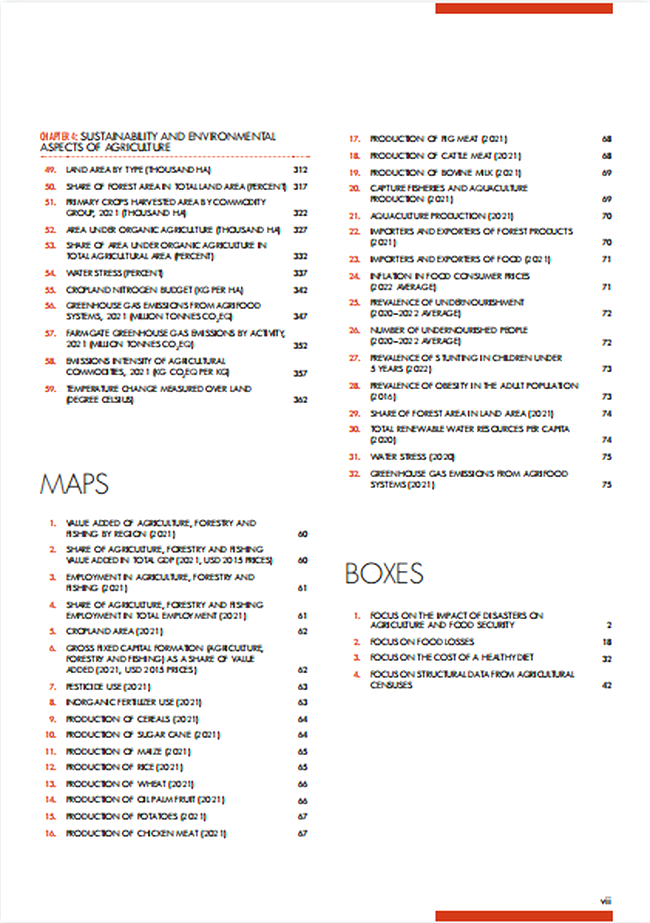
FOREWORD
Timely, accurate and high-quality data and statistics are the cornerstone of solid policy design, where decisions are based on hard evidence, and monitoring and evaluation rely on strong statistical systems. This has become all the more critical as governments around the world commit to major sectoral and national development plans, as well as regional and global development agendas. Statistical work has been at the core of the activities and mandate of the Food and Agriculture Organization of the United Nations (FAO) since the Organization was founded in 1945, supporting its Members in eliminating hunger, improving nutrition, eradicating rural poverty, and promoting inclusive and efficient agrifood systems. FAO is a leading provider of internationally comparable data on food, nutrition and agriculture, which are gathered from national statistical offices and from FAO’s network of partner agencies and are harmonized to paint a global picture. All of these data are summarized in this Statistical Yearbook. The Statistical Yearbook is a primary tool and indispensable reference for policymakers, researchers and analysts, as well as laypersons interested in the past, present and future paths of food and agriculture. Drawing on the wealth of information that FAO statisticians produce across the Organization, this publication offers a synthesis of the major factors at play in the global food and agricultural landscape. Statistics are presented in four thematic chapters, covering the economic importance of agricultural activities; inputs, outputs and factors of production; implications for food security and nutrition; and agriculture’s impacts on the environment. This year, special attention is given to the impact of disasters on agriculture, as new information from FAO now quantifies the magnitude of losses resulting from these events. FAO work on estimating food losses, which uses non-conventional data sources, is also featured. Data on the cost and affordability of a healthy diet, which have been released recently in FAOSTAT, are showcased as well and provide a measure of economic access to nutritious foods and healthy diets that are a key link between food security and nutrition. Finally, this edition of the Statistical Yearbook highlights information on the structural characteristics of the agricultural sector coming from censuses of agriculture that users can now easily compare across countries and census rounds for the first time. This Statistical Yearbook is only one of a series of tools and statistical publications that FAO provides to users. The freely accessible FAOSTAT data platform contains the largest statistical database on food and agriculture in the world, with approximately 20 000 indicators covering more than 245 countries and territories, and around 2 million views each year. The Statistical Yearbook is accompanied by the shorter Statistical Pocketbook, which provides a quick and easy reference to the main facts and trends in food and agriculture. In addition to compiling and disseminating data, FAO is also involved in strengthening the statistical capacity of countries so they can produce more and better data, set standards and methodologies, and leverage big data innovations. FAO is committed to ensuring free access to current, reliable, timely and trusted data, necessary to chart a course towards more sustainable and equitable agrifood systems and a world free of hunger.
José Rosero Moncayo
Director, Statistics Division
ACKNOWLEDGEMENTS
This Statistical Yearbook was prepared by the Statistics Division (ESS) of the Food and Agriculture Organization of the United Nations (FAO) in collaboration with the Communications (OCC), Fisheries and Aquaculture (NFI), Forestry (NFO), Land and Water (NSL) and Markets and Trade (EST) divisions. Olivier Lavagne d’Ortigue led the work under the direction of José Rosero Moncayo (ESS Director). We would like to thank the following for their contributions and input: Iana Arkhipova, Veronica Boero, Carlo Cafiero, Giulia Conchedda, Piero Conforti, Valentina Conti, Christophe Duhamel, Birkan Durak, Adrienne Egger, Tomasz Filipczuk, Laura Galeotti, Chiara Gnetti, Amanda Gordon, Leman Yonca Gürbüzer, Dominique Habimana, Anne Kepple, Irina Kovrova, Arvydas Lebedys, Eun Jeong Lee, Jeannie Marshall, Masakhwe Sharon Mayienga, Patricia Mejias Moreno, Jean-Marie Munyeshyaka, Griffiths Obli Laryea, Xueyao Pan, Giulia Piva, Kimberly Sullivan, Salar Tayyib, Francesco Tubiello, Monica Umena, Stefania Vannuccini, Sara Viviani, Michele Vollaro, Sven Walter, Nathan Wanner, Firas Yassin and Zehra Zaidi. This Statistical Yearbook is dedicated to the memory of Salar Tayyib (25 January 1960 – 13 October 2023) and Ilio Fornasero (27 May 1967 – 17 November 2023).